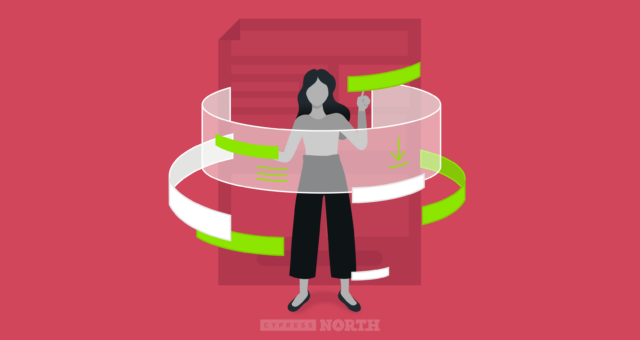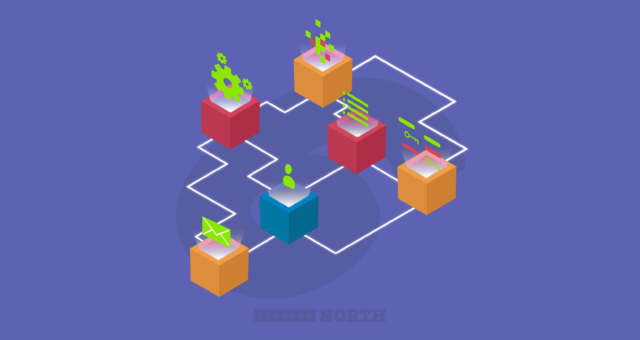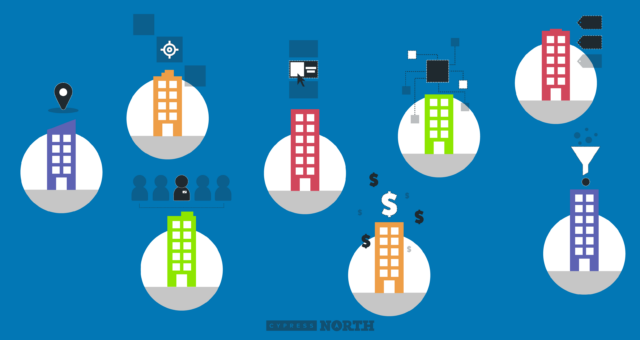What Is CRM Retargeting and Why Is It a Necessity for B2B Digital Marketing?

Most marketers and internet users alike are familiar with the concept of web retargeting: the practice of serving ads to internet users based on how they’re interacted with your company’s website. However, far too many people are unfamiliar with CRM retargeting, an extremely powerful way for B2B marketers to target prospects online, get more from their CRM data, and increase conversion rates down the funnel.
Not familiar with web remarketing? No worries! Catch up in a jiffy with this retargeting guide.
After reading this article, you’ll be an expert on CRM retargeting. We’ll dive deep into the following topics.
- What is CRM retargeting?
- What are the advantages of CRM retargeting?
- Core applications of CRM advertising
- How to incorporate CRM remarketing into your digital marketing strategy
- How CRM retargeting can help you achieve your B2B marketing goals
What is CRM Retargeting?
CRM retargeting (a type of CRM advertising and digital marketing also known as CRM remarketing) is the practice of using first-party data stored in your CRM, POS, and other systems to serve more personalized remarketing content to your audience. But what does this really mean? Put simply, CRM retargeting allows you to serve highly-targeted ads to CRM lists that have been segmented by online behavior, offline interactions with your company, and other data that you’ve collected.
If you’re excited to learn how CRM advertising could benefit your marketing strategy, keep on reading to take a dive into its biggest advantages, learn about its strongest applications, and find out how to implement it yourself.
What Are the Advantages of CRM Retargeting?
Because CRM remarketing’s main premise is to have more personalized interactions with prospects you’ve already engaged, its core benefits are based in having more meaningful, higher converting ad experiences for prospects. While there are many benefits to CRM based digital marketing, we’ve outlined our personal top five for you below.
1. CRM remarketing is more personalized.
While pixel-based remarketing is great for bringing the 98% of non-converting website visitors back to the table, it doesn’t do a great job at targeting prospects who have already had meaningful engagement with your company. Ad network pixels usually cannot be used to personalize offers based on contact information such as company, lifecycle stage, and lead score.
2. Focus on prospects most likely to convert.
In addition to improving personalization, being able to use CRM data like lifecycle stage, company, and job title for targeting makes it easier to prioritize ad spend on specific audiences that are more likely to convert and yield more revenue, such as previously qualified leads that have gone cold.
3. Remarket to leads from ad network lead forms.
CRM lists allow you to remarket to leads generated by ad network lead forms across multiple networks, even if they have never visited your website. That means that if a lead downloads a piece of content through a LinkedIn lead form, you can dynamically target them on display, search, and other social networks. Try doing that with a pixel.
4. Contacts in your CRM want to hear from you.
According to data privacy laws, contacts must be marketing opt-in in order for their CRM data to be used for advertising. These contacts are expecting to receive communication from your company, and therefore will be more receptive to your ads than people who have only visited your website.
5. CRM digital marketing offers an alternative way to reach contacts in your CRM.
Let’s face it, in an era of declining email open rates it’s harder to reach prospect via email than ever before. CRM remarketing can augment traditional email marketing nurture flows as an additional way of reaching contacts in your CRM to convert them further down the funnel.
Core Applications of CRM Advertising
While CRM marketing has many benefits, you’ll only reap them with the right execution strategy in place. For best results, test one (or all) of these applications:
1. Top-of-the-Funnel Nurturing
It’s a no-brainer that you should be leveraging your CRM data to move contacts down the funnel. Nurture contacts from top-of-the-funnel offers, such as blog subscriptions or content downloads, to MQL by targeting them with bottom of the funnel offers, such as demo or trial requests.
2. Bottom-of-the-Funnel Nurturing
Do you have MQLs that your sales reps can’t connect with or do you have SQLs that have gone cold? Remarket them with an offer to book a meeting with your sales team to help bring them back to the table and convert these leads into opportunities.
3. Upselling and Cross Selling
If your company has the opportunity to upgrade existing customers’ services or sell them on additional products and services, targeting customers with upsell and cross-sell campaigns may be an option. However, this approach is not for every business. These types of campaigns need to feel personal in order to avoid alienating customers, and businesses will need to adjust their strategy based on company size and level of customer engagement.
4. Account Based Marketing
Do you have clearly defined target prospect account lists in your CRM intended for Account Based Marketing (ABM)? You can leverage these lists in ad networks as part of your ABM strategy and serve personalized offers to key decision makers at your target companies.
How to Incorporate CRM Remarketing in Your Digital Marketing Strategy
Compared to pixel based strategies, CRM based digital marketing strategies often require more infrastructure, planning, and setup, but this extra time investment will ultimately lead to increased pipeline for your business.
1. Define Your Audiences
While most audiences are segmented using ad network audience tools, CRM lists also have to be defined within the CRM before they’re uploaded to the network. On the most basic level, you’ll have to make sure that your targeted contact list only contains marketing opt-in contacts; targeting contacts who are not marketing opt-in is in violation of privacy regulations and could lead to an account suspension.
After creating this list, you will want to further segment your contacts by your chosen criteria such as lifecycle stage or recent engagement. To prioritize which types of campaigns to pursue, analyze your current marketing funnel. Where are the biggest drop off points and what types of prospects are most likely to fall off? Use this information to segment your lists and launch campaigns that will bring them back to the table.
2. Prepare & Upload Data
Next, you will need to export your list from your CRM, clean it to remove any junk leads, and organize to match the standards of the ad network(s) you intend to upload it to. Email tends to be the most reliable piece of information to include for audience matching, so make sure your list at least has an email column formatted for the selected network(s). You may also be able to use full name, phone number, and even social handles in certain cases. If you need help importing your CRM lists, refer to this guide to uploading email lists to ad networks.
Having to manually upload CRM lists to ad networks sounds tedious, right? To make matters worse, if you’re running campaigns on multiple ad networks, have several different audiences, and want audiences to update in real-time, manually uploads will not even be feasible! Luckily there are tools like HubSpot’s Ads Add On and Salesforce’s Advertising Studio that dynamically sync CRM lists across a variety of ad networks to keep your audiences up to date and save you the headache exporting and uploading multiple lists.
3. Plan Follow Up
Lastly, you need to consider what will happen after a prospect converts on one of your CRM advertising campaigns. Keep in mind that you will want to remove that contact from the audience, you may want to have a specific dashboard for reporting on CRM remarketing campaigns, and if the contact is owned by a specific sales person, you will want to make sure that sales rep is automatically notified of the conversion.
Is CRM Retargeting the Missing Piece to Your B2B Marketing Strategy?
So what do you think? Could CRM advertising actually help increase conversions for your organization? The reality is this: while CRM remarketing has many benefits, its core value is that it leverages data that you already have to boost conversion rates down the funnel and drive pipeline. If you have the time and resources to implement it, it’s really a no-brainer.
As long as you identify the stages in your funnel that could most benefit from retargeting, set appropriate cost per conversion goals, segment lists accordingly, present personalized offers, and maintain proper reporting, you’ll reap the benefits.
However, it doesn't stop there. There's so much more to B2B digital marketing than CRM retargeting. Be sure to read our guide to B2B Digital Marketing Challenges to learn how to optimize your digital demand generation efforts.
Daunted by the prospect of doing this on your own? Don’t be! We’re a team of digital marketing and demand generation experts who’ve got your back. Feel free to ask us a question, or get in touch to work with us on a project.







